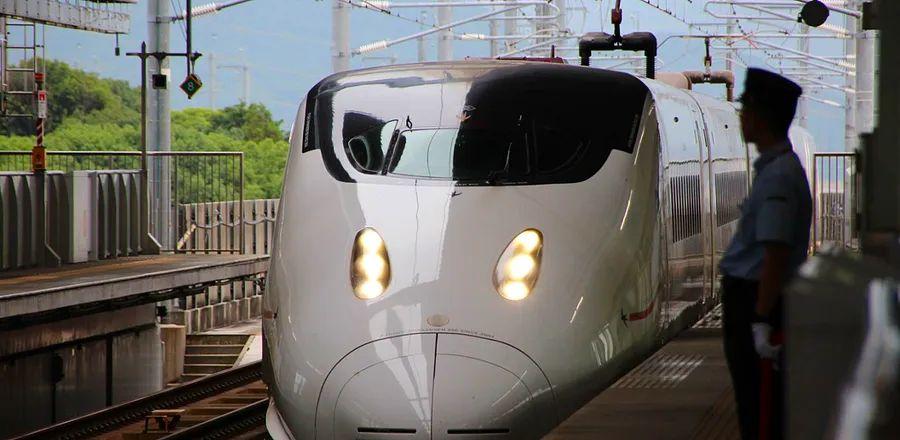Navigating Japan’s Extensive Railway Network

Japan's rail system is intricate yet highly efficient. Since its first passenger steam locomotive in 1872 during the Meiji era, it has become the country’s most popular transportation mode, boasting hundreds of lines, trains, and styles.
The Japan Railways (JR) Group runs about 70% of Japan’s railways, while smaller private operators handle local lines, subways, mountain railways, scenic routes, and more. Specialty tourist trains, such as Kyushu’s Coto Coto dining train or the luxurious Mizukaze Twilight Express, require separate tickets.
Most Japanese trains offer standard and first-class cars, called Green Cars, identifiable by four-leaf clover symbols. Green Cars, while first-class, don’t offer food or drinks. Gran Class, available on select trains since 2011, provides a premium experience with perks like leather seats, unlimited sake, and local delicacies.
Tickets for all classes can be bought at station counters or self-service kiosks using cash or credit cards. Fare adjustment kiosks are available for passengers who need to correct their fare before exiting the station.
Key train speed categories: Local trains stop at every station and are the slowest. Rapid trains skip some stops but cost the same. Express trains visit fewer stations. Limited Express Trains, costing about 600 yen ($5) more, get you to your destination faster.
Is a JR Rail Pass worth it?
Whether you're making a round-trip from Tokyo to Kyoto or exploring Japan for one to three weeks, a Japan Rail Pass can provide unlimited rides within the ticket's time frame. It’s available only to foreign tourists and can be a great value, but make sure to compare the pass cost to individual ticket prices.
JR Rail Pass pricing
As of February 2023, a one-week JR Rail Pass costs $236 for standard seats and $314 for a Green Car (first-class). Buying the pass in Japan costs $30–$50 more than purchasing it online in advance. Proof of a foreign passport is required.
How to activate your JR Pass and when to do it
Many travelers pick up their JR Pass at Narita Airport and activate it for the affordable 90-minute Keisei Line ride to Tokyo (about 1,240 yen or $9), but it’s not the best use of a travel day. Activate your pass when traveling longer distances to maximize value. To get the most from your seven-day pass, aim for daily fares over $38.
Activate your JR Pass at a JR station office. Lines can be long during peak hours, so it's smart to activate it in advance for your chosen start date. Once activated, show the pass with your passport to gate agents to access passenger areas, which often include shops and restaurants.
What about subway tickets?
JR Passes don’t cover subways. For fast access, purchase a rechargeable Suica or IC card at station kiosks. These cards let you breeze through turnstiles and can also be used in some taxis, 7-Elevens, vending machines, and more. Keep at least 2,000 yen ($15) on your card to avoid delays. The card deposit is 500 yen ($3.75), and unused credit remains valid for 10 years. Cashing out the card comes with a 220-yen ($1.66) fee.

Times to avoid taking the train
Navigating Japan’s rush hour might seem like an adventure, but it’s stressful for both you and commuters. If possible, avoid weekday trains between 8 a.m. and 9 a.m. or 5 p.m. and 7 p.m. Friday evenings between major cities are also crowded, as are Sunday afternoons when shoppers fill the trains.
That said, experiencing Japanese rush hour is a rite of passage. You may find yourself in packed trains at least once, and while it makes for a good story, it’s something most travelers will aim to avoid next time. Women traveling alone during rush hour can use women-only cars, often marked in pink on subways and certain rail lines.
Where to find train maps and schedules
Google Maps is now one of the best tools for checking train schedules in Japan, offering details on times, costs, stops, and crowd levels. In-station boards showing arrivals and departures are also easy to spot. Free rail maps are available at all JR offices, and one is included with your JR Rail Pass. HyperDia is another English app and website that provides comprehensive train schedules.
How to ride the bullet train (shinkansen)
Shinkansen (bullet trains) are operated exclusively by JR and run on dedicated tracks and platforms, separate from regular trains. It can take 10-15 minutes to reach the shinkansen platforms from main ticket areas at major stations, so plan accordingly. The SmartEX app, launched in 2017, allows visitors to book shinkansen tickets, select seats, and get notifications on delays or cancellations.
The JR Pass is valid on all shinkansen trains except Nozomi and Mizuho, the fastest options on the Tōkaidō and San-yo lines. These trains are only about 20 minutes quicker than other JR Pass–eligible trains that run just as often. For instance, Nozomi trains from Tokyo to Osaka take 2.5 hours, while other shinkansen take three hours. Unless you're a train enthusiast or business traveler, the extra cost likely isn’t worth the minimal time saved.
How to reserve seats on a bullet train in Japan
Shinkansen trains offer both reserved and nonreserved cars. JR Pass holders can reserve seats for free at a JR ticket office or through the app. Most trains have a two-three seat layout, so you might find yourself between two sleeping commuters with a view of Mount Fuji. For better seats, ask for a window spot with a Fuji view or two seats on the side for couples. If no seats are available, you may need to stand or sit separately, so booking 24 hours ahead is recommended. However, scoring great seats in an empty nonreserved car while others crowd into reserved cars can be quite satisfying.

Japanese train etiquette
Train etiquette is crucial in Japan. For the rail system to function smoothly, everyone—including tourists—must follow the rules. These are simple: Be polite, considerate, and avoid direct eye contact to respect personal space.
Luggage
Most locals don’t bring large suitcases on trains. Tourists with big bags can take up space on trains, which usually lack luggage compartments, and might receive disapproving looks from locals. Use luggage delivery services like Yamato Transport (with the iconic black cat logo), which are affordable, fast, and available across Japan. Even budget hotels can assist with sending your luggage to hotels, airports, or major stations. Skip the hassle of dragging a suitcase through crowded stations.
Boarding lines
When boarding trains, always queue in the marked lines for each car. Even if you have a reserved seat, you’ll still need to wait in line. If you don’t have a reserved spot and want to snag a good seat, arrive early to be first in line.
Sound Levels
When traveling on the train, it's important to keep your voice low. If you must take a phone call, try to make it brief and as quiet as possible. Alternatively, step out between the train cars where it’s less likely to disturb others. Despite the dense crowds often associated with Japan, train rides can be remarkably quiet. Use earbuds to enjoy music or watch videos on your device at a low volume. Remember, the train is a communal space, and courtesy goes a long way.
Dining on the Train
Consuming food and beverages on the train is not only accepted but also commonplace. Many locals savor their lunches—often paired with a beer—while traveling and might even doze off afterward. If you miss out on grabbing a bento box at the station, don’t worry! You can still purchase snacks from the trolley service that passes through each car, offering drinks like sake and beer along with treats like Meiji chocolate, all while bowing in respect as they leave each car.
Cleanliness Etiquette
Most train stations feature both hot and cold vending machines on their platforms, and larger stations often include 7-11 and convenience stores (known as konbini). Arriving early allows you to browse for snacks or a magazine before your journey. While trains in Japan are famously punctual and will never leave early, they arrive and depart in mere seconds, so it’s wise to be on time—or better yet, a bit early.
Japanese train stations offer some of the finest dining and shopping experiences. Many locals set aside an extra 30 minutes to an hour to wander through these stations, sampling highly recommended izakaya, ramen shops, and bakeries.
This article was initially published in 2021 and has been revised to include the latest information.

1

2

3

4

5
Evaluation :
5/5